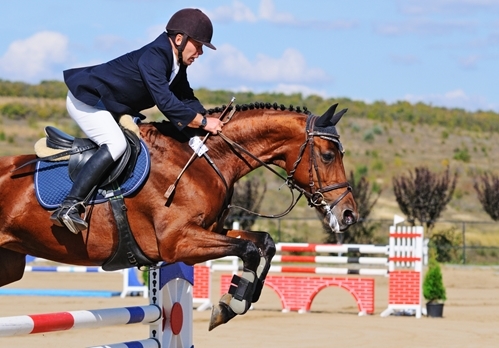Each year, thousands of horses engage in a slew of competitive events to the delight of fans the world over. Whether it’s dressage, show jumping, polo, endurance riding or eventing, there’s one common denominator: The most successful horses are at or near their physical peak. In order to accomplish just that, horses, much like football or baseball players, must spend the off-season training and developing. From proper nutrition to the most effective workout regimens, here are just some of the ways to prepare your horse for a truly breakout season:It’s all about timing
First and foremost, horses should always stay active, even when they’re not competing. Not only is this better for their overall health and well-being, but it keeps them ready for the start of the season while lessening the amount of training required. However, as It’s Showtime pointed out, there are specific steps that need to be taken leading up to the season’s first show:
Two months: This is when the more serious exercises should begin, with 30-minute sessions per day of flat work. Every week afterward, add another 15 minutes to the horse’s regimen.
One month: Now’s the time to begin preparing the horse for a specific event, getting them used to the rules and general structure. The best bet is to do so gradually, focusing on different components of the event as to avoid overwhelming the animal.
One week: Use this as an opportunity to iron out any specific issues. For instance, if the horse’s figure-eights aren’t where they should be, then perfecting them deserves the most attention.
The day before: This is often the best time for any last-minute grooming. Additionally, try to walk your horse around the competition grounds so they’re better familiarized.
Preparation can run right up to the moment before show time, and the most effective trainers will always make a list of their goals and issues in order to stay on track.
Proper grooming is important
No matter how physically ready a horse may be, all competitive events factor in the animal’s physical appearance. As such, grooming and general maintenance are vital throughout the preparation process. Different trainers might have different approaches to things like hair and whisker cutting. Some will give their horse the full cosmetic treatment as much as a month before the season’s first show. Meanwhile, some will wait as far as a week before. It’s all a matter of your personal approach; however, waiting too long doesn’t leave much room to address any potential grooming issues.
Perhaps, then, the best bet is continued maintenance leading up to the event, trimming and cutting and bathing in order to build up healthy hair and coat. HorseChannel.com suggested the following tips:
Be sure to run the clippers through the horse’s bridlepath and whiskers every couple of weeks.
Avoid over-bathing, as too much shampoo can actually damage the horse’s coat. A product like Feet First® promotes shinier, healthier coats.
To prevent fungus-induced hair loss, sponge the horse’s face after each exercise session.
When trying to train the horse’s mane to rest on one side, use a specific, horse-friendly mousse. Sheen products can give the horse’s coat a nice glossy shine. Maintaining the horse’s tail is important. Be sure to wash, detangle and braid the tail once a week.
A change in nutrition
What a horse eats during the pre-season can have a sizable impact on that future champion’s overall performance. Speaking with HorseChannel.com, veterinarian Dr. Lydia Gray noted a few important areas of focus in order to maximize a horse’s physical potential:
Core foods: When preparing for competition, a horse’s diet should emphasize barley, oats and corn.
Electrolytes: The more a horse exercises, the more the animal will lose crucial electrolytes. The Electrocharge™ supplement can help replenish those crucial minerals.
Vitamin E: According to Gray, hay loses most of its vitamin E content once its been cut. To help mitigate that effect, Vitamin E & Selenium can serve as a substitute and promote proper muscular development.
Multi-vitamins: Cutting hay can also reduce its vitamin A content. Gray suggested a multi-vitamin supplement, and a product like Ultra Fire™ is a great choice for replenishing those minerals and vitamins.
Calories: In order to maintain weight and energy levels, a horse will need added calories. These can be accomplished by giving the animal food items like fat, beet pulp, whole grain and hay pellets.
Before any change in a horse’s diet, however, it’s important to consult with your local veterinarian.








